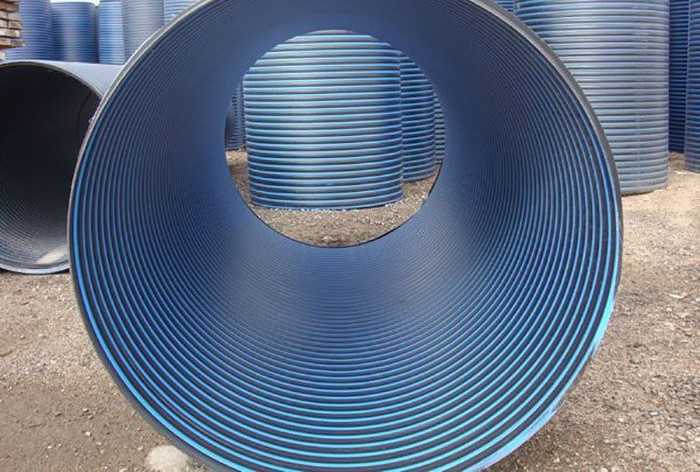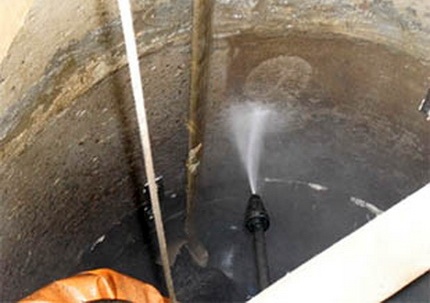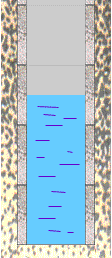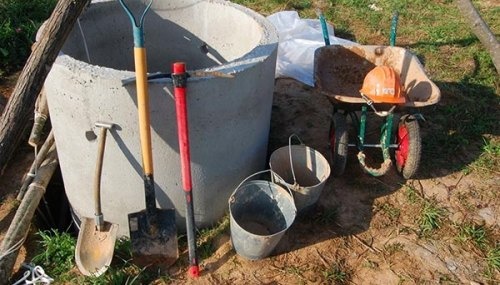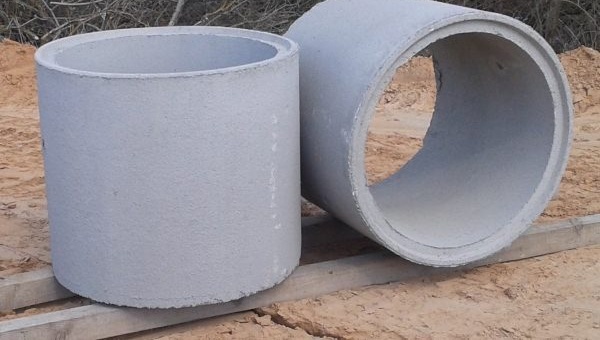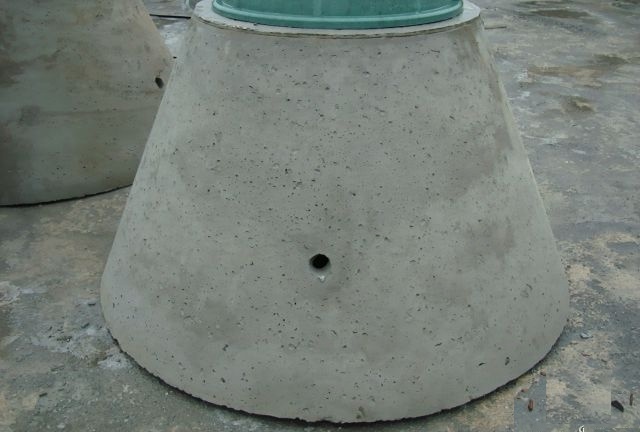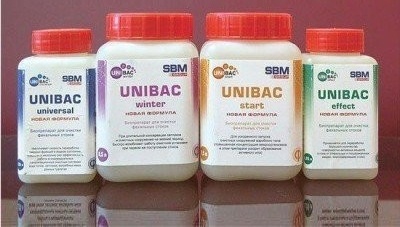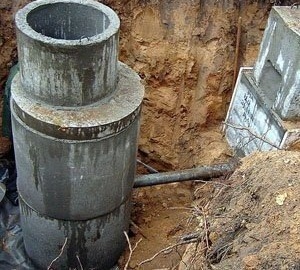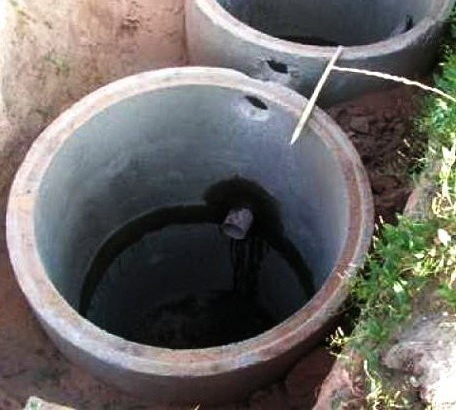How to seal joints in a well made of concrete rings
Well in our country, wells made of reinforced concrete rings have one significant drawback. The lack of tight adhesion between adjacent structural elements, uneven edges and the tendency of concrete to crack result in a serious problem - the penetration into the well trunk of groundwater, the so-called high water. To prevent contamination of the source, it is necessary not only to properly seal the seams between the rings, but also to audit and repair the defective areas.
Content
Causes of Leaks
The construction technology of wells with shafts from modular reinforced concrete structures involves the installation of rings on a sand-cement mortar. Filling all the bumps in the joint between the upper and lower rings, the mortar should create a reliable barrier to melt and groundwater.
Contrary to popular belief, sealing with mortar made of sand and cement is also needed for well modules with a castle connection. The presence of the latter prevents the displacement of the rings, but does not protect the joint from leakage.
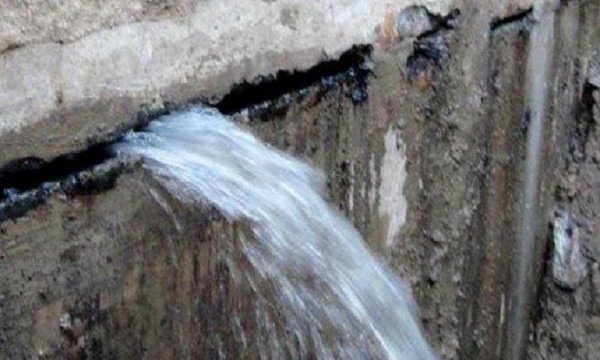
Speaking of leaks between the well rings, they often recall the deterioration of the quality of drinking water, completely forgetting about the danger of the gradual destruction of the well shaft
It should be noted that such a primitive waterproofing gives a positive result - the mine of the drinking spring remains dry. However, the absence of leaks in the first years of operation is not a guarantee that this idyll will last forever.
As a rule, even on stable soils, after 4-5 years, the surface of the concrete trunk is covered with wet spots, which soon turn into dirty streams and streams. You should not blame yourself or the builders for the fact that the work was done incorrectly. Most often, leakage occurs for completely different reasons:
- Simple mortar is not intended for use in such harsh conditions. Constant humidity, temperature changes and the effects of salts dissolved in water contribute to its cracking and destruction.
- If a well is dug in a site with pronounced seasonal movements of soil, then its trunk is subjected to regular mechanical stresses.As a result, one can observe not only cracks at the joints, but also the mutual displacement of concrete rings in the horizontal plane.
- In the northern regions, the upper rings are exposed to frost forces. Because of this, they can not only move horizontally, but also move up and down.
- Force majeure circumstances, expressed in the displacement or subsidence of the rings due to the appearance of quicksand.
- Poor quality materials - in rings made with a violation of technology, various defects can appear over time - through cracks, crumbling sections, etc.
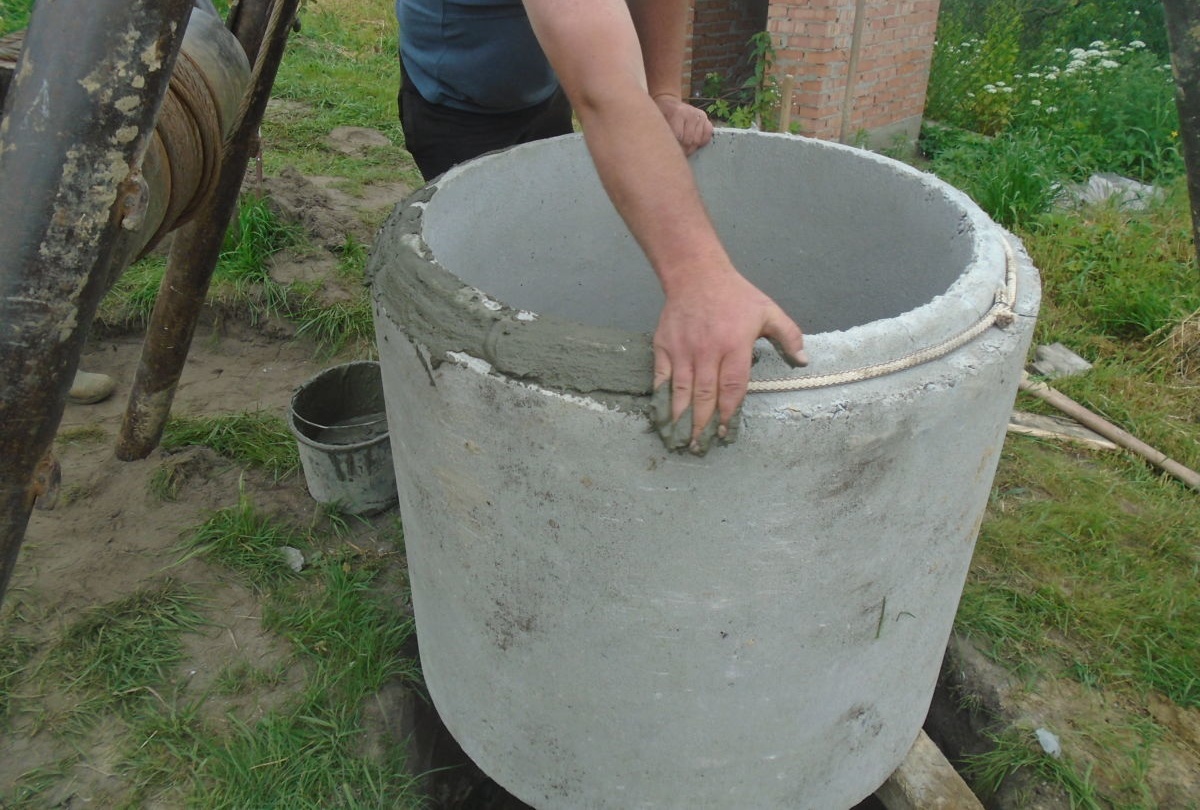
Well waterproofing should be taken care of even at the stage of its construction - in the future this will save a lot of time and effort
If the well is built with the simultaneous laying of the rings, then very often they do not perform even simple sealing with a mortar. And in this and in other cases it will be necessary to carry out a set of measures for reliable waterproofing of joints.
Methods of sealing joints in a well from prefabricated concrete modules
To seal joints between concrete rings, you can use one of the following methods:
- plastering;
- sealing with waterproofing roll;
- applying bitumen mastic;
- filling gaps with seals;
- the use of polymer inserts.
The choice of a specific sealing method depends on whether the well to be dealt with is under construction or in operation. In addition, it will be necessary to take into account the construction technology, soil features, the depth of the source of drinking water and other factors.
| Waterproofing | Features | |||||
|---|---|---|---|---|---|---|
| Mounting method | Efficiency water protection |
Safety | Durability | Special requirements |
Price | |
| Plastering | interior outer |
high | high | average | no | average |
| Roll | outer | average | low | high | requires additional waterproofing |
average |
| Bitumen | outer | average | low | high | requires additional waterproofing |
average |
| Sealing materials |
interior outer |
low | average | low | requires additional waterproofing |
low |
| Polymer liner | interior | high | high | high | no | high |
It should be noted that the best results are obtained by a combination of several waterproofing methods - only in this case can one expect 100% success.
Plastering
The use of special plaster mixes is perhaps the most common waterproofing method. The popularity of sealing joints with plaster is due to both simplicity and accessibility, as well as the ability to work from inside and outside the well. Sealing is carried out using spatulas, with which the mortar is pressed into cracks and cracks. The plaster is applied until the solution completely fills the gap, after which the liquid mixture is leveled at the interface.
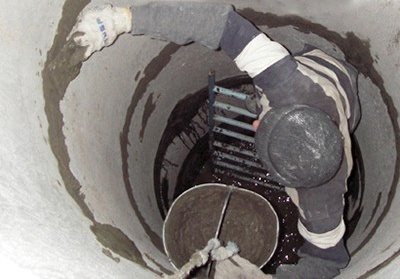
Sealing joints with plaster is one of the easiest and most affordable methods of sealing, which makes this method very popular among home masters
There is little point in using a conventional sand-cement mortar - it is very likely that it will crack and the seam will leak. It is best not to save and use special compounds called hydro-seals.
For more information about the use of hydroseals for sealing joints of well rings, click here: https://aquatech.tomathouse.com/en/vodosnab/kolod-skvaj/gidroplomba-dlya-kolodca.html
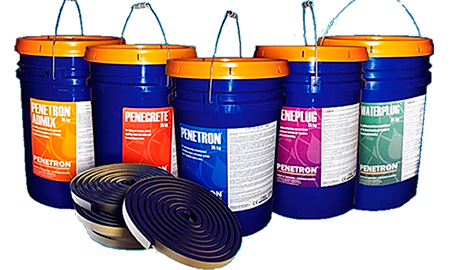
Manufacturers produce water seals "for all occasions" - if necessary, you can even find a composition that can instantly stop the flow with a pressure of up to 7 atmospheres
Made on the basis of aluminum cement, fine sand and chemically active additives, water-resistant mixtures have a reduced setting time and, in addition, possess such necessary properties as frost resistance, strength and ductility.With their help, you can not only close up the dry joint between the rings, but also eliminate leaks under pressure.
By avoiding the question of specific brands of water seals, materials such as Penetron and Penecrete can be recommended for general cases. If, urgently, it is necessary to eliminate the pressure leak, then choose Waterplug, Puder-Ex or Peneplug - they have a minimum solidification time and high adhesive ability in a humid environment.
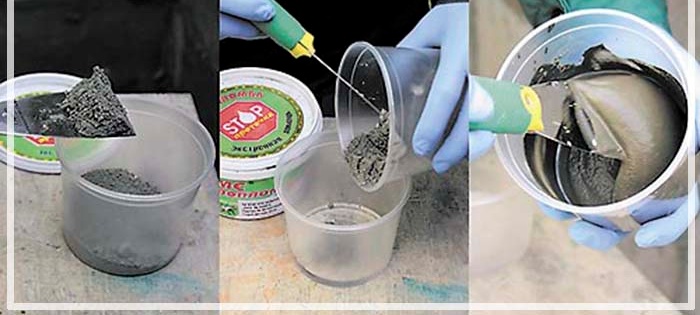
Hydro seal is a high-tech quick-hardening composition, therefore, when preparing it, the manufacturer's recommendations should be strictly observed
Application of roll waterproofing
As a rule, the section of the well mine is exposed to the most severe impact of groundwater at a depth of 3 meters from the surface. In this case, the joints can be protected with roofing material or other roll waterproofing. To do this, a ditch about a meter wide is dug around the well and a layer of waterproofing is fused or glued onto the upper rings.
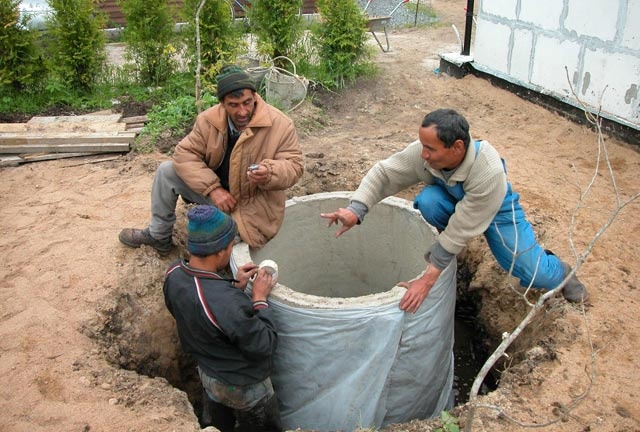
External waterproofing should be surfaced or installed on a layer of glue - simply wrapping with a plastic film is not enough
For additional protection of the well from rain or melt water, the pit can be filled with clay. After careful compaction, it will act as a hydraulic lock, preventing the penetration of moisture to the well trunk.
In addition to roll materials, special sealing strips can be found on sale. Unlike roofing material, they can be used to localize cracks from the inside.
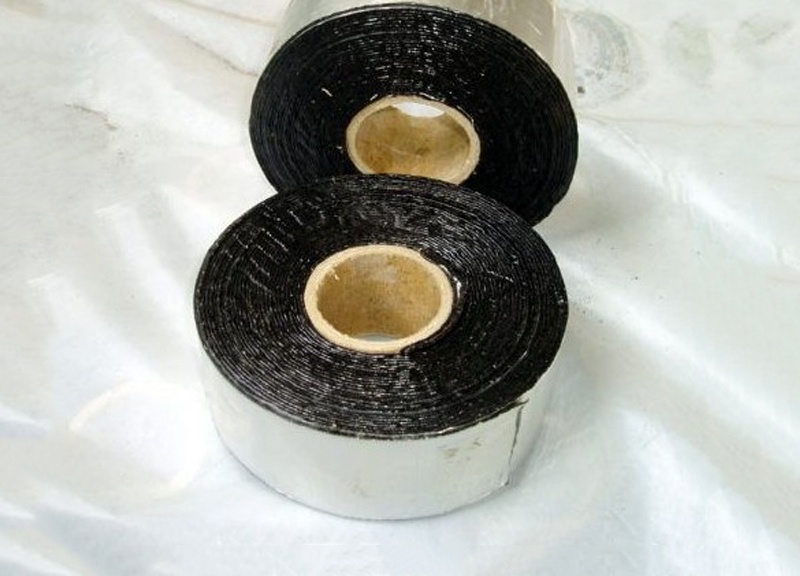
Self-adhesive sealing strips have high adhesion to the concrete surface and can be used for waterproofing joints both outside and inside wells
Using bitumen mastic
For waterproofing with liquid bitumen, the rings are dug to the required height and thoroughly cleaned of dirt. After that, a resin (tar) dissolved in gasoline is applied with a wide brush. Since a thin film of bitumen for high-quality waterproofing will not be enough, at least three layers will be needed. For better adhesion to the concrete surface, the first penetration is done with a mixture in the proportion of 1 hour of resin to 4 hours of gasoline, and the other two in the ratio of components one to one.
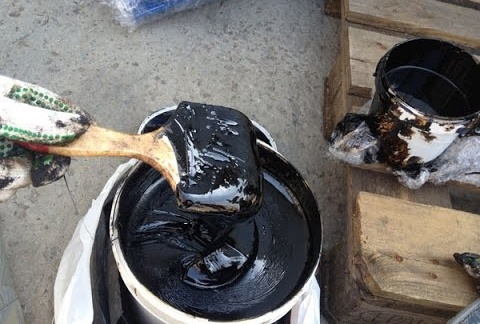
To seal the well from the outside, you can use both ready-made rubber-bitumen mastic and self-made tar
It should be noted that roll waterproofing, as well as tar, cannot be attributed to environmentally friendly materials. For this reason, the surface of the joints on both sides is pre-protected with a layer of moisture-resistant plaster - it will serve as an additional guarantee that substances hazardous to health will not get into the well.
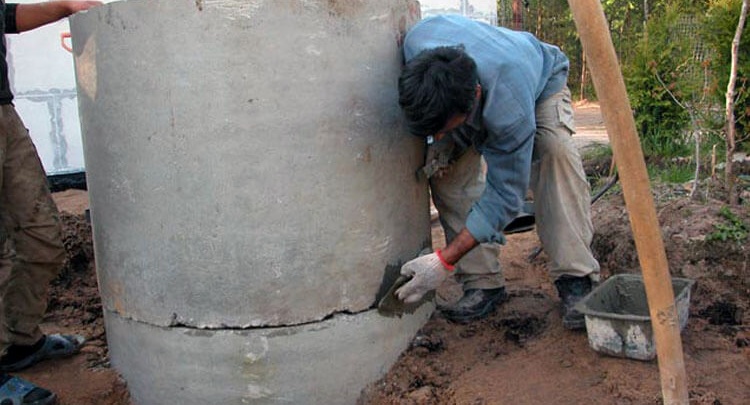
Before starting the coating of the outer part with a bituminous composition, the joints should be plastered
Sealing inserts
There are situations when reinforced concrete rings are so worn out that their repair, as, indeed, and sealing joints, does not bring the desired results. In this case, you can use the most effective way - to install plastic liners inside the barrel.
Such inserts are made from high-strength polymers and, depending on the diameter, have a wall thickness of 5 to 8 mm. On their outer surface there is a ribbing, thanks to which the cylindrical liners resemble a huge corrugated pipe.
The outer spiral polymer rings play a very important role. They allow you to increase the rigidity of the structure and make it possible to connect plastic modules with virtually no gaps - in this way you can get a cylindrical pipe of any height.
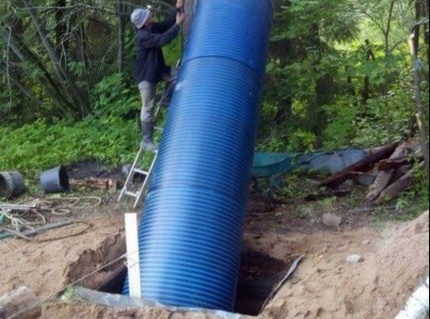
Sealing the well with a polymer insert is a complex and expensive undertaking, therefore it is better to entrust this work to professionals
The industry has mastered the production of sealing inserts for concrete rings of any diameter, so picking up a plastic cylinder into the well will not be difficult. Inserts could be called an ideal option, if not one but - this option is the most expensive of all considered.
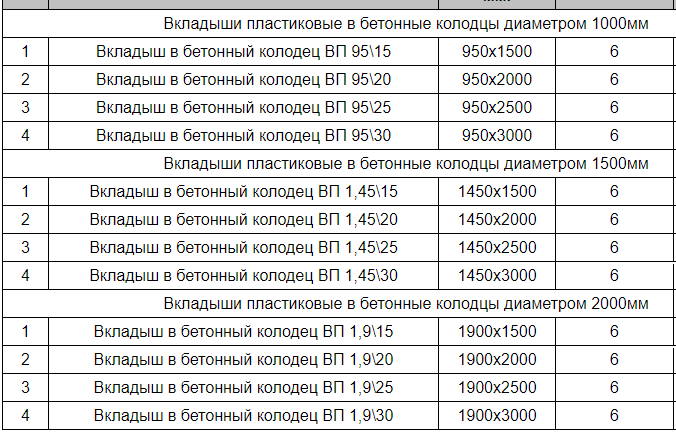
The dimensions of the polymer liners correspond to the internal dimensions of standard reinforced concrete rings
Is there a folk alternative to expensive modern materials
If immediate measures are required to eliminate the leak, and the above methods seem too time-consuming or expensive, then the gaps between the rings can simply be caulked. Suitable for termination are both special rubber or fibro-rubber strips, as well as flax fiber impregnated with fibroresin, hemp or jute rope. Such materials are not a shortage - they can easily be found in retail outlets that sell products for waterproofing pools. Sealing with sealing inserts eliminates cracks up to a centimeter wide and is nothing more than a temporary measure. Be prepared for the fact that over time the joints will need to be sealed with more durable materials.
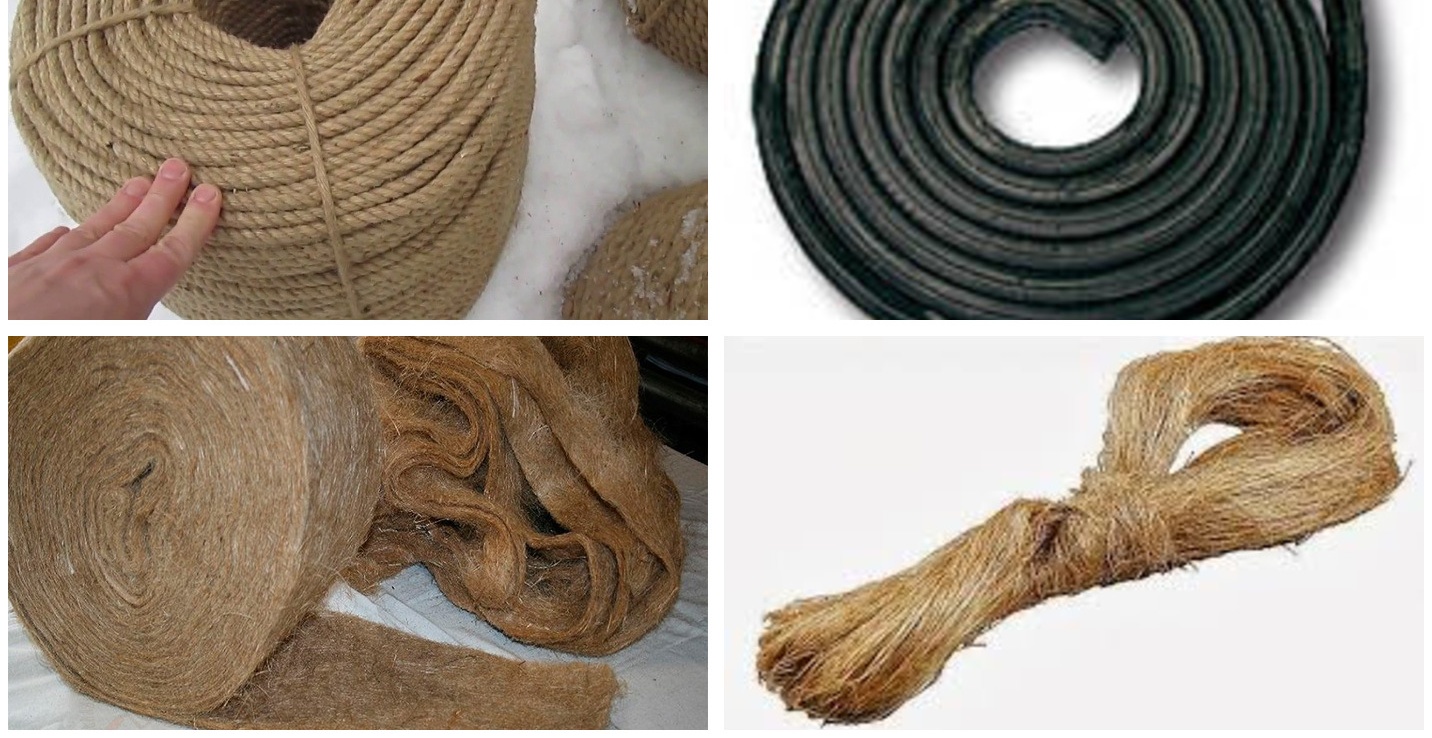
Using improvised sealing materials can not only quickly eliminate leaks, but also save an expensive filling composition when sealing wide joints
Of course, at home, it will not be possible to create a full replacement for water seals. Nevertheless, craftsmen found a way out of the situation by adding liquid glass to the mortar. Since such a composition hardens in less than a minute, sand and cement are first mixed in a 1: 1 ratio. One part of the alkaline solution is added immediately before applying the sealing compound to the joint or crack.
Video: sealing the well with a homemade water seal
Features of sealing wells from the inside
Waterproofing the well on the inside can be done using grouting compositions and materials, as well as using plastic inserts. In the latter case, it is better to entrust the work to specialists, but sealing the joints with plaster can be done on their own.
The first thing to take care of is the construction of a convenient and safe workplace. Do not think that the use of a rope ladder is a practical and convenient option - you will change your mind already in the fifth minute of its use. Most often, for this purpose, they use a small shield suspended on strong ropes or steel cables. Such a “cradle” is attached to a wooden beam or channel laid on the top of the well, and a powerful winch is used to lower it. As you already managed to understand, you cannot do without assistants. In addition, you should take care of reliable insurance - in its quality you can use a strong rope tightly tied around the belt and attached to the supporting cross member.
When repairing an operated well, water should be pumped out of it. This will clear the bottom of the sludge and, if necessary, restore the filter layer. In addition, perennial layers of dirt and mold must be removed from the inner surface of the barrel. There is no better tool than a pressure washer for these purposes. After thorough cleaning of the concrete surface, you will be able to see the picture of damage in the details and decide on how to eliminate them.
Sealing joints and cracks
A metal brush is used to clean problem areas and seams between the rings. Among other things, it will help to obtain a rough base to improve adhesion with a sealing composition. After that, the concrete is moistened with water and begin to apply the plaster.There are no difficulties here - the working mixture is pressed into the joints with force and rubbed on the surface.
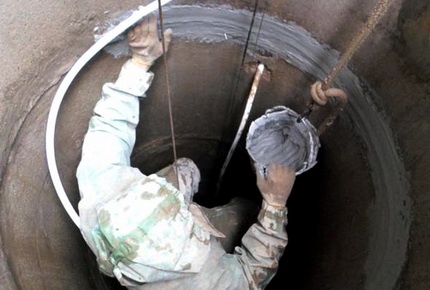
It doesn’t matter how the cracks fill - with a spatula or hand. The main thing is that the sealing compound penetrates the gap as deep as possible
Only small cracks can cause difficulty - it is impossible to push the solution into narrow, filiform cracks, and spreading a water seal on the surface will not give special results. In this case, the crack is widened with a hammer and a small bit, trying to get a gap with the shape of a dovetail in cross section.
When filling wide cracks and through holes, a lot of working solution is required, therefore, in order to save expensive purchased compounds, you can cheat a little. For this, the main part of the seal is made of thick sand-cement mortar or fiber-rubber grouting, filling the factory with waterproofing only the outer part of the “patch” to a depth of 1-2 cm.
What to do when shifting rings
If the shift of the concrete modules of the wellbore does not exceed 1/3 of the thickness of the rings, then the waterproofing is performed according to the above method. With significant displacement, the trunk is dug up to the level of the damaged area and disassembled into its component parts.
Returning the removed links back, they must be laid on a layer of cement mortar and simultaneously aligned on the lower ring. After this, the seams inside and outside are sealed with a special compound. On the question of how to prevent a possible displacement of the rings in the future, we will return.
Step-by-step instructions for sealing joints and sealing a well shaft
Before proceeding to seal the well, the following tools should be prepared:
- containers for mixing working solutions;
- metal brush;
- surface scrapers or high pressure washers;
- spatulas;
- hammer drill or hammer drill;
- wide paint brush with hard bristles;
- hammer;
- thin chisel.
The work should be performed sequentially - so you will not miss a single detail. In each case, it is required to make individual decisions, therefore, a common algorithm does not exist. Nevertheless, we present to your attention the most complete instructions for sealing well seams. We tried to consider the most important points in it, so that you had a complete picture of the nature and procedure for carrying out repair activities.
- Preparatory stage. All functional and decorative elements are removed from the existing well, completely exposing the head. If necessary, a well trunk is dug up to the third or fourth ring, and water is pumped out using an electric pump. After that, lifting equipment and a working platform are installed.
- With the help of friends or relatives descend into the well. Using brushes, scrapers and a high pressure washer, they clean the surface of the barrel. Doing this is best, moving from top to bottom. At the same time, they carefully inspect each ring, evaluating the front of the upcoming work and the possible costs of the material (do not forget that the "life" of factory seals is measured in minutes).
- Having sunk to the bottom, do not rush to clean it of silt. Firstly, during repair work, the bottom part will be contaminated with garbage and falling solution in one way or another, and secondly, this will give an additional influx of water.
- Having cleaned the surface, they begin to seal the joint, which is located above the water mirror. The rings that are installed below do not make sense to seal - this part of the well is in the aquifer. The sealing is performed in sections of 10-20 cm, and vertical cracks should be plastered from bottom to top.
Sealing dry cracks, as well as those from which water comes in small portions, does not cause difficulties.Difficulties arise with damage, from which the jet hits under pressure - the sealing compound is immediately washed out. In this case, at a distance of 25 cm below the leakage site, 1-2 drills with a diameter of 20-25 mm are performed - they will serve to redirect the flow. After the main crack is closed, the holes are corked with wooden pegs or rubberized tow and sealed with a thick layer of filling solution.
- To protect the inner surface of the rings from mold and mildew, the entire concrete surface is coated with an antiseptic. Offhand, you can call quite good means Nortex, Capatox or Ceresit CT-99.
- After the last slot is closed, they sink to the bottom and clean the bottom filter. If necessary, the filter layer is restored.
You can learn more about how to clean a well from this article:https://aquatech.tomathouse.com/en/vodosnab/kolod-skvaj/chistka-kolodca-svoimi-rukami.html - Having risen up, they begin to seal the outer surface of the well shaft. To do this, the walls are covered with two or three layers of bitumen mastic (tar) or glued (fused) on them roll waterproofing.
- The dug trench is covered with soil and rammed, equipping the hydraulic locks made of greasy clay at the very surface. The thickness of its layer should reach the point of maximum freezing - this will be the key to a dry well mine during spring floods.
- Return to the place and, if necessary, repair the outer part of the well and the finish.
They do not start well operation right away. It is necessary to wait until it is filled to a normal level and completely pump out all the water. Only after this can the source be considered serviceable.

Clay dumping should be arranged according to the rules, otherwise there will be no sense from such a hydraulic lock
How to prevent displacement of well rings in the future
With the displacement of the lower rings, you have to put up with - digging the barrel to such a depth is extremely time-consuming and expensive task. Since the shift most often occurs due to weak soil or quicksand, there is no guarantee that trouble will not recur after repair. As for the upper 2-3 rings, they just need to be returned to their place without fail - this will make it possible to make high-quality waterproofing and thereby avoid flooding of the mine by the overhead cable.
The simplest thing that can be done to prevent the horizontal shift of well rings is to replace them with hollow reinforced concrete modules with lock joints. For those who are embarrassed by the additional costs, we can recommend connecting adjacent rings using strong metal staples or thick steel plates. To do this, holes are drilled at a distance of at least 25 cm from the joint, into which the bracket is driven from the outside. The edges protruding inward are bent and carefully sealed. If plates are used, then they are installed on both sides and fixed with bolts with a diameter of at least 12-14 mm.
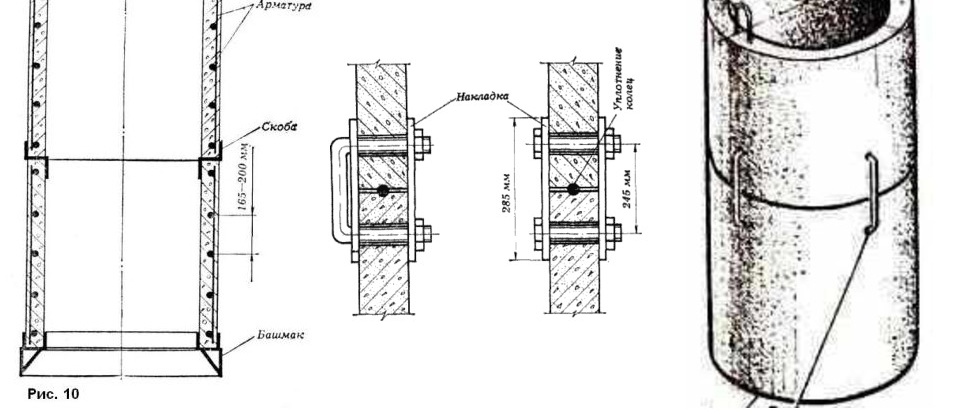
Concrete rings can be interconnected with metal brackets and straight or curved plates of thick steel strip
The method of connecting rings using metal fasteners is widely used by experienced craftsmen when digging wells. Concrete modules fastened together are much better settled down, as the lower links pull the upper links along. In addition, it decreases the likelihood that the rings in the water horizon will “float away” under the influence of a quicksand.
On abyssal soils, cracks in the joints appear due to the fact that the soil is trying to push the upper rings up, lifting them above the other links of the well shaft. In this case, the trunk is disassembled to a depth below the calculated freezing point and the cylindrical modules are changed to conical.
Prefabricated cone rings are almost impossible to find, so they have to be cast with their own hands. The slope of the latter should be directed inside the structure and be from 10 to 15 degrees. Due to this, the buoyancy forces change their direction to the opposite, pressing the upper concrete module to the well trunk.
Video: how to close up joints in a well with a precast concrete mine
Now you know how to repair cracks between concrete rings and how to prevent their appearance. We will be happy if our tips and tricks help make the drinking water in your well tastier, cleaner and healthier. Leave feedback about the article, share your own ways to solve the problem and ask questions. Our experts will provide you with expert assistance in the shortest possible time.
